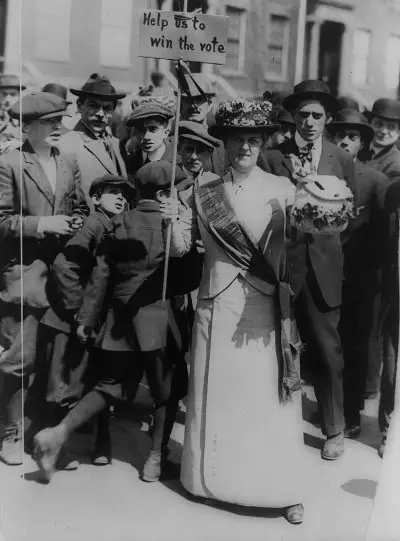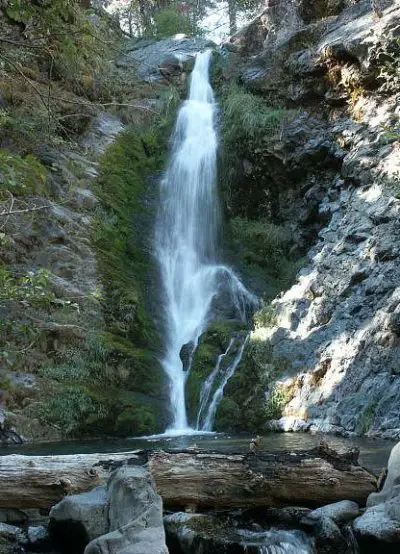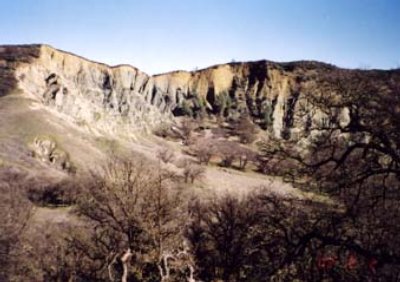- Sophie Annan Jensen
- Posted On
A month to celebrate women

It’s Women’s History Month, and it’s not your fault if you didn’t know that.
The tradition started in 1981, when Congress established the second week of March as Women’s History Week. In 1987 they expanded it to a month and every year since, they’ve passed a resolution on it, and the president has issued a proclamation. And yes, he did so this year.
The only sign of it here was on March 8, when Lake County poet laureate Sandra Wade held a reading for International Women’s Day a Redbud Library and urged teachers to give students credit for attending.
OK, we’re not Sonoma County, where the National Women’s History Project started in 1980 and persuaded Congress to pay attention. Their impetus was noticing that only 3 percent of textbook content was about women.
Three percent. It is to laugh, scornfully. Anyone who’s ever watched Western movies knows the nation’s history, to say nothing of the world, is simply teeming with women.
And so are Lake County’s past and present. We’ve had women county supervisors before Denise Rushing. Louise Nan’s superintendent of Konocti Unified School District. A woman started this publication you’re reading.
Dozens, maybe hundreds, of women run our businesses, head political committees, provide health care at all levels, keep volunteer groups running, and lovingly fill that traditional woman’s job, teaching.
Shelby Posada runs the Arts Council, Melissa Fulton runs the Chamber of Commerce. Could you ask for a broader range?
Native women were here when the pioneer families arrived, and today some of them are running things in their tribes. Tracey Avila chairs the Robinson Rancheria Tribal Council. Irenia Quitiquit is Robinson’s environmental director.
(It’s just as well I've only been here four years and don’t know that many people or you’d be getting a very long list of names.)
So – why don’t we celebrate Women’s History Month and the many achievements of our friends and neighbors?
Don’t we care? Or are we just too busy doing today’s work?
Too busy is my guess. So how about we give ourselves a break from how much we are doing to notice what we have done?
And how about sending us a few words on your own favorite piece of women’s history? Mine’s that Mom riveted airplane wings during World War II. Then she made me take typing.
Watch a movie:
– North Country: Based on a real story, stars de-glammed Charlize Theron as one of a handful of women working in the Minnesota iron mines. Forced to labor under sexist conditions, she and her female colleagues fight the relentless harassment of their male co-workers and bring the first class action suit for sexual harassment.
– Iron Jawed Angels (history): From 1912 to 1920, a group of fiery young suffragettes led by Alice Paul (Hilary Swank) and Lucy Burns (Frances O'Connor) band together to wheedle the United States into adapting a Constitutional amendment guaranteeing women the right to vote. Their efforts incur the wrath of President Woodrow Wilson (Bob Gunton) and anger other suffragette leaders (Anjelica Huston and Lois Smith). Not a pretty picture.
– Calendar Girls: Based on a true story. These English women are resilient, resourceful and refined. They're also about to shock the residents of their little town. When one of their own discovers her husband has cancer and needs treatment, the group decides to put out their yearly calendar to raise money for the local cancer center. But instead of the usual Yorkshire dales, they'll grace the pages in the nude.
–Little Miss Sunshine is fiction, but has great insight. It gives us pudgy young Olive (Abigail Breslin), obsessed with beauty pageants, a blessedly sane mother (Toni Colette) who tells her it’s OK to be fat, a twitty father (Greg Kinnear) who redeems himself when he’s horrified by the pageant’s other contestants, all tarted up as premature sex objects. Also, it’s very funny, but rated R, in part for the wonderful Alan Arkin’s foul mouth.
Read a book:
– Inés of My Soul, Isabel Allende, 2006. The Chilean author brings her magic realism to an historic novel, the story of Ines Suarez, who left Spain in the 16th century to find her husband and wound up co-founding a New World nation.
– The Yellow Wallpaper, Charlotte Perkins Gilman, 1892, fiction. What to do with a depressed wife? This doctor husband thinks he knows, but it’s a prescription from hell.
– Writing a Woman’s Life, Carolyn G. Heilbrun, 1988, non-fiction. Great introduction to the historic treatment of women writers, and to rewriting your own life, if it needs that.
– And now for something really light, but crammed with early 20th century history: Laurie R. King’s mystery series based on the premise the retired Sherlock Holmes meets a much, much, younger woman, Mary Russell, who becomes his detecting partner and wife. Start anywhere. You’ll catch up.
E-mail Sophie Annan Jensen at This email address is being protected from spambots. You need JavaScript enabled to view it..
{mos_sb_discuss:5}










